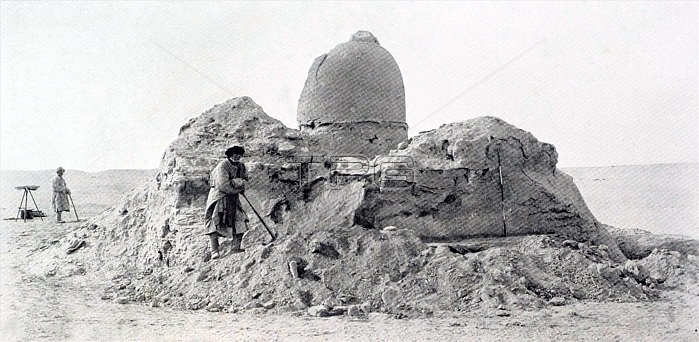
In ancient times Miran was a busy trading center on the southern part of the Silk Road, after the route split into two (the northern route and the southern route), as caravans of merchants sought to escape travel across the harsh wasteland of the desert (called by the Chinese 'The Sea of Death') and the Tarim Basin. They went by going around its north or south rim. It was also a thriving center of Buddhism with many monasteries and stupas.
Marc Aurel Stein was the first archaeologist to systematically study the ruins at Miran in 1907. The many artifacts found in Miran demonstrate the extensive and sophisticated trade connections these ancient towns had with places as far away as the Mediterranean Sea.
Archaeological evidence from Miran shows the influence of Buddhism on artistic work as early as the first century BCE. Early Buddhist sculptures and murals excavated from the site show stylistic similarities to the traditions of Central Asia and North India and other artistic aspects of the paintings found there suggest that Miran had a direct connection with Rome and its provinces.
| px | px | dpi | = | cm | x | cm | = | MB |
Details
Creative#:
TPG32662412
Source:
達志影像
Authorization Type:
RF
Release Information:
須由TPG 完整授權
Model Release:
No
Property Release:
No
Right to Privacy:
No
Same folder images:

 Loading
Loading